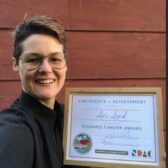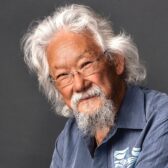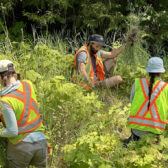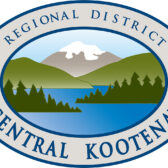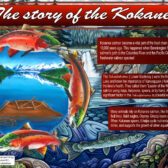Tla’amin Nation, B.C. and Canada initial final agreement
Chief negotiators for Canada, British Columbia and the Tla’amin Nation (Sliammon First Nation) initialed a Final Agreement last week.
This initialing marks an important step toward a treaty that would bring economic and social benefits to the First Nation and the Powell River region.
“With 50 per cent of Tla’amin Nation’s population under the age of 25, I believe this agreement will ensure that the Tla’amin people have the ability to provide increased economic opportunities for future generations, while continuing to honour their traditions and culture,” said Aboriginal Relations and Reconciliation Minister Mary Polak.
The Tla’amin Final Agreement contains provisions for self-government, financial and land transfers. The land component will consist of approximately 8,322 hectares of treaty lands that include surface and sub-surface resources, and comprised of 1,917 hectares of former Indian Reserves and 6,405 hectares of former Provincial Crown lands.
The Tla’amin Nation will receive a capital transfer of approximately $29.7 million over 10 years, economic development funding of approximately $6.9 million, and a Fishing Vessel Fund of $250,000. B.C. and Canada will each provide $331,292 annually in resource revenue sharing for 50 years.
The treaty also provides for the ownership of forestry resources, as well as domestic fishing, gathering and harvesting rights. Commercial fishing opportunities will be licensed by the Minister of Fisheries and Oceans and managed under the terms and conditions that apply to other commercial fishers.
The Tla’amin Final Agreement will provide certainty with respect to Tla’amin Nation’s Aboriginal rights and title throughout its traditional territory. The Final Agreement will also provide opportunities for the First Nation to increase its participation in the regional economy and reduce its reliance on government transfers.
Through self-government, treaty First Nations exercise law-making authority over matters integral to their community, such as health, education, and child welfare. Self-government may also include authority to raise revenues, to manage lands and resources on their lands, and to negotiate with other governments on such matters as joint service delivery and economic development.
The Tla’amin Nation has approximately 990 members. Their traditional territory and reserve lands are located just north of Powell River. There are six reserves on just over 1,917 hectares.
For more information about the Tla’amin Nation and treaties in B.C. and Canada, and photos available for download please visit these websites:









